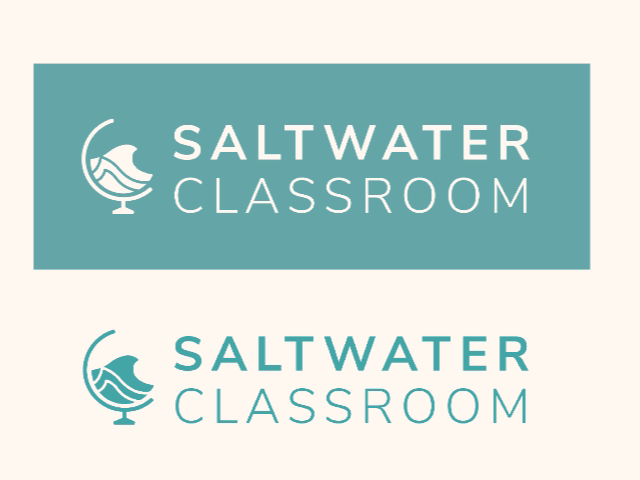Taking care of the ocean is a global effort. This is the lesson being imparted to one hundred and seventy first form students at Saint Catherine Academy by a team of volunteers from Saltwater Classroom, a non-profit organization. Saltwater classroom works with students from the United States, Mexico, and now Belize, to introduce an innovative approach to environmental education and foster an idea of ocean stewardship. The team hailed from Maine earlier this month and has spent the past five days conducting experiments and research activities with the students of S.C.A. News Five’s Britney Gordon visited the workshop to see how the team was wrapping up its final day of activities. Here’s the full story.
Britney Gordon, Reporting
Over the past week a team of volunteers from Saltwater Classroom, a non-profit organization, has been working hand in hand with the teachers and students at Saint Catherine Academy to instill valuable lessons about ocean care and research. Head of the Science Department at SCA, Fredezia Lambey told us that this exciting initiative has been a goal for the academy for several years.
Fredezia Lambey, Head of Science Department, SCA
“So in this week, very exciting week, we’re having a five-day long workshop with our first form students. It’s a group from Maine called Saltwater Classroom, and it’s really just a workshop on ocean science, teaching our students a bit about the ocean as a global system and about ways to conserve and protect our oceans.”
“Talk to me about this group that came in. How did you get in contact with them? What kind of things are they teaching them?
“This has been a long anticipated project over about a span of three years before I was even here. But it has been how you’d say the reason for wanting to do this project. And the reason why we chose this project is really because as believes, our Caribbean Sea and our waterways are part of our identity, and there’s so much importance in the ocean and what the ocean does for us in terms of our livelihood, and we think that it’s really important for our first farmers and our students on a whole to see that see the importance of it with the hope to foster some stewardship in terms of ocean conservation, ocean protection, we want our students to have those core values instilled in them, and it all starts with education.”
Founder and Executive Director of Salt water Classroom, Alexandra Doudera, said that what drives her and her team to bring these lessons into classrooms is a desire to unite people in protecting a resource that is vital to everyone’s survival, no matter the age or where they are located.
Alexandra Doudera, Founder & Executive Director, Saltwater Classroom.
“We really see the ocean as a global unifier. We, no matter where you live are dependent on the ocean and connected to it in many ways. So, we see this as an opportunity to come together and bridge Geographic distances and cultural divides and really unite over a passion for the oceans, a commitment to their stewardship and this desire to keep learning.”
Today was the final day of activities for the students. Doudera explained that this activity is a culmination of the week’s lesson, allowing students to apply the lessons learned to create real-world solutions for issues plaguing the environment.
“So today one of my favorite lessons, the students are asked to choose an issue that is important to them, whether it’s habitat disruption or plastic pollution, or microplastics. And then spend some time brainstorming their own unique solution to the problem. There’s five different types of solutions. So a media or awareness campaign, a law or policy, an education strategy a redesign or an innovation, something totally new. So that’s what they’re working on right now.”
Six first form classes, consisting of about one hundred seventy students, participated. We spoke with Cassidy Centino, who shared what she’s learned from the experience.
Cassidy Centino, First Form Student, SCA
“Just recently, they took us to the seawall to perform different things with the seawater such as checking the solidity, acidity, and the temperature.”
Britney Gordon
“What’s something that you’ve learned as a part of this program?”
“Well, I’ve learned many things because I’m not too familiar with the sea, so everything that I have learned is new such as major oceans, accessory oceans, and just different facts about them”
Another student, Addison Giron, also shared what she’s learned from the workshop and explained why she believes activities like this are important to participate in.
Addison Giron, First Form Student, SCA
“We also learned how to label a fish or different types of fish. We also learned how to check the temperature of the water, the acid, and stuff like that.”
Britney Gordon
“Why do you think it’s important to participate in activities like this?”
Addison Giron
“I think it’s important to learn activities like this because it is a part of our world and we need to show the world it’s important because we’re polluting the waters and stuff like that, and we need to show it’s a major part of the Earth.”
Alexandra Doudera
“We did our first program in 2018 in Maine and we’ve been steadily growing since then. In addition to many programs in our home state we have a really strong relationship with a school and a community on the Pacific coast of Mexico. So we’ve taught there as well. But besides the United States and Mexico, Belize is our third international destination.”
Britney Gordon for News Five.
